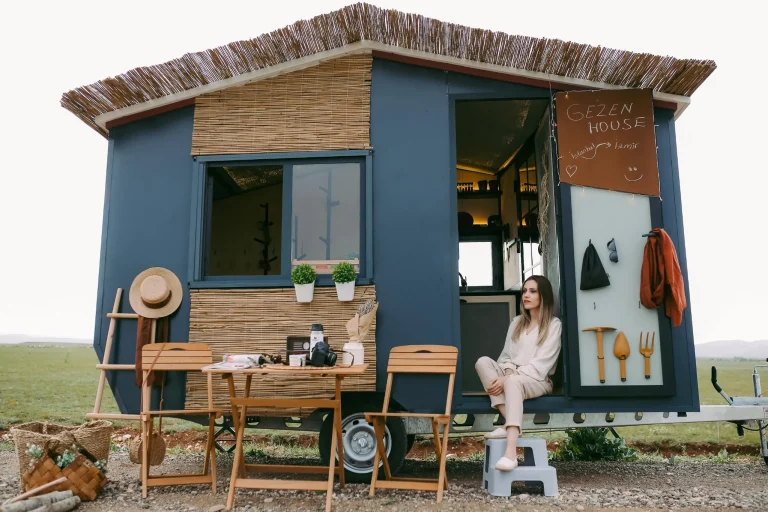Rediscovering the Wisdom We’ve Forgotten
In a world dominated by technology, convenience, and instant everything, something vital has gone missing—our ability to do things with our hands, our hearts, and our local resources. You might feel this void without fully naming it. Maybe it’s the longing to grow your own food, fix what breaks, or preserve food without a freezer.

The lost Amish skills we’ll explore in this article are more than nostalgic—they’re survival tools, cost savers, and paths to independence. You don’t need to become Amish to benefit from their wisdom. You just need a willingness to learn, adapt, and apply what still works in today’s fast-changing world.
Why These Lost Amish Skills Still Matter
You live in a time of increasing dependency on fragile systems—power grids, factory food, and digital everything. But the Amish live outside those systems and thrive. Their way of life proves that simpler, slower, and more intentional living still works—and in many ways, works better.

Whether you want to be more resilient, save money, or prepare for uncertainty, learning lost Amish skills gives you power. Power over your food, energy, and well-being.
1. Bread Baking from Scratch (No Machines Needed)
Amish families often bake bread daily using time-honored methods and minimal ingredients. They don’t rely on bread machines or store-bought mixes. Just flour, water, yeast (often homemade), and hands that know what they’re doing.
Why you should learn this:
-
It saves money
-
You control every ingredient
-
It connects you to a calming ritual
2. Hand Quilting and Sewing
From heirloom quilts to daily mending, sewing is a core Amish skill. Hand-stitching takes time but builds patience, precision, and pride in what you make.
You’ll benefit by:
-
Repairing rather than tossing clothes
-
Creating blankets, bags, and gifts
-
Developing a timeless, artistic skill
3. Root Cellaring for Long-Term Storage
No electricity? No problem. Amish households use underground root cellars to store food for months—using nothing but earth’s natural coolness and humidity.
| Produce | Ideal Temp (°F) | Ideal Humidity |
|---|---|---|
| Carrots | 32–40 | High |
| Potatoes | 40–50 | Medium |
| Apples | 32–40 | High |
| Cabbage | 32–40 | High |
Learning to build and use a root cellar helps you store food when refrigeration isn’t an option.
4. Raising and Butchering Chickens
The Amish raise chickens not just for eggs, but also for meat. They know how to butcher humanely, use every part, and never waste a resource.
Why it matters:
-
You gain fresh, reliable protein
-
You reduce grocery bills
-
You build confidence in real-world skills
5. Soap Making with Natural Ingredients
Forget commercial soaps loaded with chemicals. Amish soap is made from lard, lye, water, and herbs. It’s cheap, clean, and long-lasting.
Learn it to:
-
Avoid toxins
-
Save money
-
Create gifts or barter items
6. Preserving Food Without a Freezer
Before refrigeration, the Amish used canning, fermenting, salting, and drying to keep food safe and edible year-round.
Popular methods include:
-
Water bath and pressure canning
-
Fermenting vegetables like sauerkraut
-
Drying herbs, fruits, and meats
💡 Want to dive deeper into forgotten food skills?
The Lost Superfoods teaches 126 preservation techniques that kept families fed before modern appliances ever existed.
7. Blacksmithing and Basic Metal Work
While many rely on big box stores for every nail and hinge, Amish blacksmiths forge their own tools, parts, and equipment.
Why you should try:
-
Learn to fix rather than replace
-
Build stronger, custom tools
-
Potential side income or trade skill
8. Horse-Powered Farming Skills
Instead of tractors, the Amish often use horse-drawn plows and carts. It’s slower but far more sustainable—and surprisingly effective.
Even if you don’t own livestock, learning to work with animals (or just understand the method) builds respect for pre-fuel farming systems.
9. Candle Making and Tallow Lamps
When the power’s out, the Amish light their homes with beeswax candles and tallow lamps.
Learn this to:
-
Create a sustainable light source
-
Repurpose animal byproducts
-
Make beautiful, functional home goods
10. Basket Weaving and Woodcraft
From storage baskets to carved furniture, handwork is central to Amish living.
Why it’s useful:
-
Baskets replace plastic bins
-
Woodwork is a marketable craft
-
It nurtures patience and focus
11. Natural Remedies and Herbal Healing
Amish medicine cabinets are filled with herbs like comfrey, calendula, and yarrow—grown, harvested, and prepared at home.
Examples include:
-
Plantain poultices for bites and stings
-
Elderberry syrup for immunity
-
Herbal salves for wounds
12. Manual Water Pump Operation
Amish homes often rely on hand pumps for water. These work without electricity, pulling groundwater straight to the surface.
Learning to install or use one adds another layer to your water security.
13. Community-Based Problem Solving
Barn raisings are the most iconic example—but Amish communities solve problems through teamwork, trust, and shared skillsets.
You can build this spirit of cooperation by:
-
Trading skills with neighbors
-
Joining local bartering networks
-
Hosting or attending DIY gatherings
Recommended Resource: The Lost Superfoods
If you’re serious about reclaiming these skills, The Lost Superfoods is a must-have.
Inside, you’ll learn:
-
How to make pemmican and pioneer bread
-
Long-term food storage without electricity
-
Forgotten superfoods from Native American, Amish, and WWII-era traditions
-
Survival nutrition that lasts decades
It’s more than a cookbook—it’s a survival manual grounded in ancestral knowledge.
FAQ – Lost Amish Skills in Modern Life
Can I learn these skills in the city?
Yes! Canning, baking, sewing, and even herbalism can be done in apartments or small yards.
Do I need expensive tools to start?
Most skills require basic tools you likely already have—or can build yourself.
Are Amish skills still relevant today?
Absolutely. With rising food costs and energy instability, these skills are more useful than ever.
Where do I begin?
Start with one skill—baking bread, sewing, or canning. Build confidence before moving on.
Conclusion: Reclaiming Amish Skills Is Reclaiming Power
These lost Amish skills aren’t just charming relics. They’re solutions for real problems—food security, rising costs, grid instability, and modern burnout.
You don’t need to live off-grid or wear a bonnet to embrace them. Just a few small changes can bring more resilience, joy, and meaning to your life.
👉 Start now with The Lost Superfoods—a practical, step-by-step resource to help you turn forgotten wisdom into everyday action.

